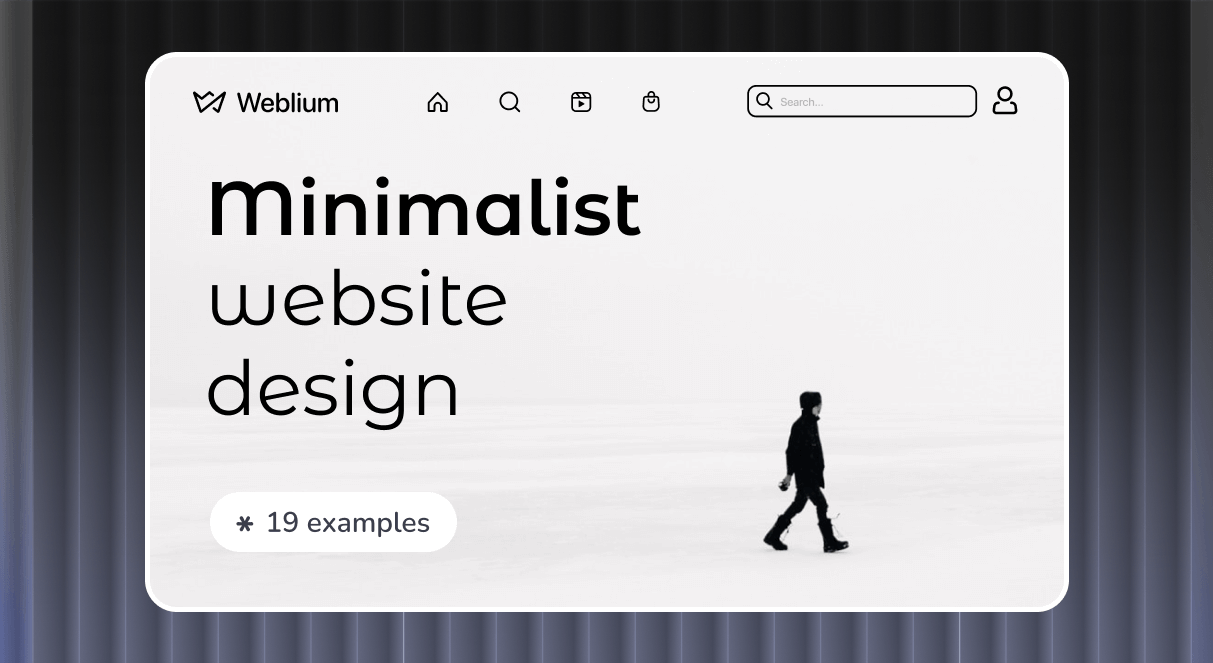Pulse of Information
Your source for the latest insights and updates.
Less is More: Embracing the Beauty of Minimalist Web Design
Discover the art of simplicity with minimalist web design. Transform your site into a stunning visual experience—less truly is more!
The Principles of Minimalist Web Design: Why Less is More
The Principles of Minimalist Web Design emphasize simplicity, focusing on the essential elements that create the best user experience. This approach revolves around the idea that less is more, stripping away unnecessary components that can overwhelm users. By utilizing ample white space, harmonious color schemes, and clear typography, designers can guide visitors' attention effectively. Key principles often include
- clarity in navigation
- strategic use of visual hierarchy
- and prioritizing content that matters most to the audience.
Adopting minimalist web design not only enhances aesthetics but also improves website performance. Faster load times are achieved when sites are streamlined, reducing clutter that can bog down functionality. Furthermore, a minimalist approach fosters better accessibility, ensuring that all users can interact seamlessly with the site. By concentrating on the core message and eliminating distractions, brands can communicate their values more effectively. In essence, minimalist design aligns with the notion that a clean and focused website not only attracts visitors but also keeps them engaged and encourages conversions.

How to Achieve a Stunning Minimalist Website: Tips and Tricks
Creating a stunning minimalist website is all about simplicity and functionality. Start by choosing a clean, uncluttered layout that focuses on essential elements. Use a limited color palette, ideally consisting of one or two primary colors supplemented by neutral shades. This approach not only enhances the visual appeal of your website but also helps in directing visitors' attention to the most important content. To achieve this, consider using white space effectively, allowing your design to breathe while guiding users seamlessly from one section to another.
Next, prioritize typography as it plays a critical role in establishing a minimalist aesthetic. Opt for readable fonts and maintain a clear hierarchy through size and weight. You can enhance the user experience by implementing intuitive navigation, ensuring that your visitors can find what they need without confusion. Remember to limit the number of graphics and images, using only those that enhance your message. By focusing on these key aspects, you can create a minimalist website that is not only visually striking but also enhances user engagement.
Is Minimalist Web Design Right for Your Business?
In today's fast-paced digital landscape, minimalist web design has emerged as a popular choice for businesses looking to capture attention quickly and effectively. This design philosophy emphasizes simplicity and functionality, often relying on a clean aesthetic and limited color palettes. By stripping away unnecessary elements, minimalist web design allows users to focus on what truly matters—your content and call to action. If your business thrives on clear messaging and quick navigation, this approach might be the right fit for you.
However, it's crucial to assess whether minimalist web design aligns with your overall branding and audience expectations. If your target market appreciates creativity and elaborate visuals, a more complex design could resonate better. Additionally, consider factors such as user experience and mobile responsiveness. To determine if this design style suits your business, ask yourself these questions:
- Does simplicity enhance my brand message?
- Will my audience appreciate a more straightforward layout?
- How can I maintain engagement without overwhelming visitors?